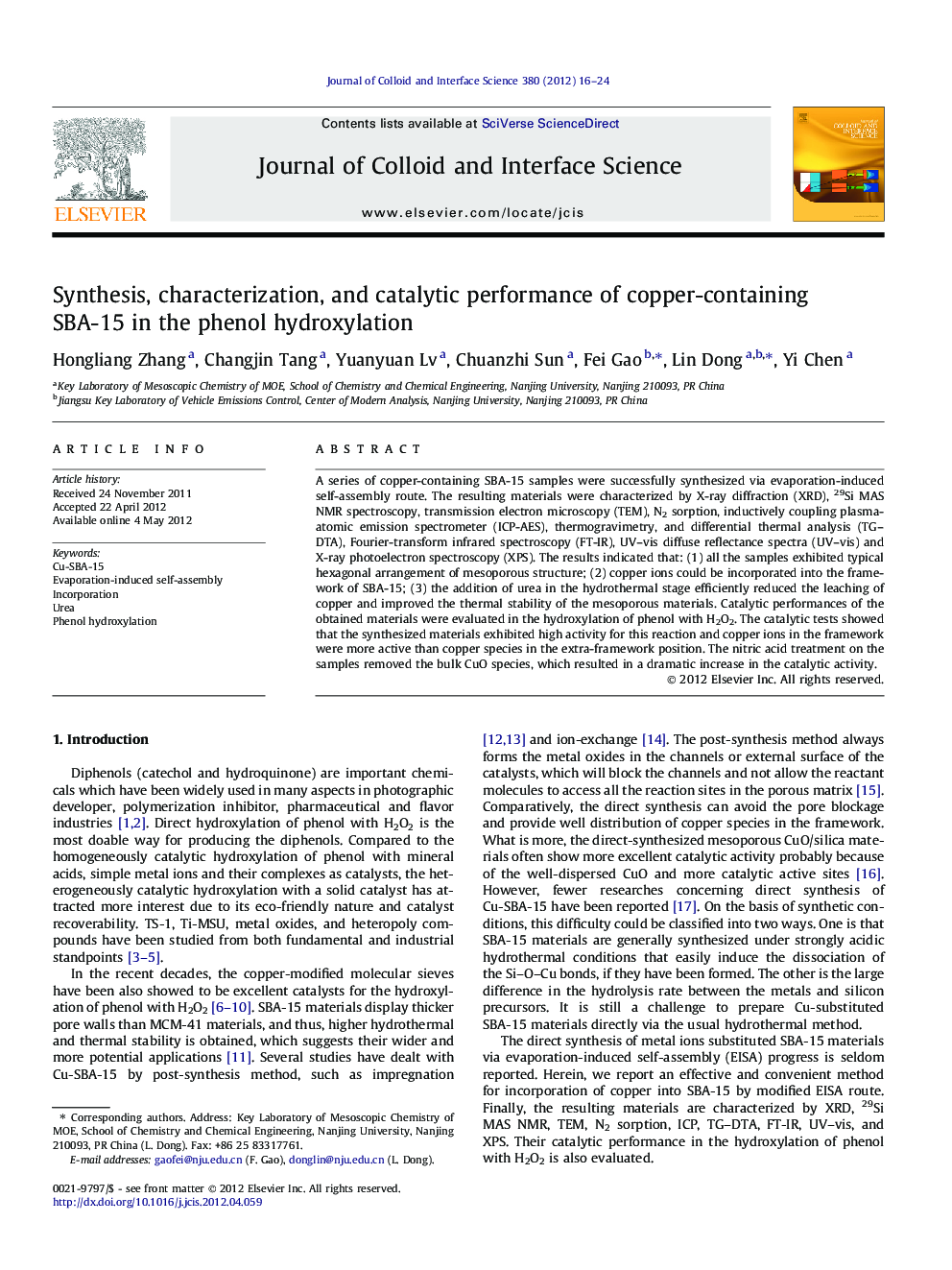| Article ID | Journal | Published Year | Pages | File Type |
|---|---|---|---|---|
| 608238 | Journal of Colloid and Interface Science | 2012 | 9 Pages |
A series of copper-containing SBA-15 samples were successfully synthesized via evaporation-induced self-assembly route. The resulting materials were characterized by X-ray diffraction (XRD), 29Si MAS NMR spectroscopy, transmission electron microscopy (TEM), N2 sorption, inductively coupling plasma-atomic emission spectrometer (ICP-AES), thermogravimetry, and differential thermal analysis (TG–DTA), Fourier-transform infrared spectroscopy (FT-IR), UV–vis diffuse reflectance spectra (UV–vis) and X-ray photoelectron spectroscopy (XPS). The results indicated that: (1) all the samples exhibited typical hexagonal arrangement of mesoporous structure; (2) copper ions could be incorporated into the framework of SBA-15; (3) the addition of urea in the hydrothermal stage efficiently reduced the leaching of copper and improved the thermal stability of the mesoporous materials. Catalytic performances of the obtained materials were evaluated in the hydroxylation of phenol with H2O2. The catalytic tests showed that the synthesized materials exhibited high activity for this reaction and copper ions in the framework were more active than copper species in the extra-framework position. The nitric acid treatment on the samples removed the bulk CuO species, which resulted in a dramatic increase in the catalytic activity.
Graphical abstractFigure optionsDownload full-size imageDownload high-quality image (48 K)Download as PowerPoint slideHighlights► Cu-SBA-15 are successfully synthesized via evaporation-induced self-assembly route. ► Addition of urea reduces leaching of copper and improves thermal stability of materials. ► Copper ions in the framework are more active than bulk CuO in phenol hydroxylation. ► The nitric acid treatment removes bulk CuO, improving the catalytic activity.
